Thien Mu Pagoda
If Hanoi has One-pillar pagoda, Hue is renowned for its Thien Mu pagoda. The architecture, location and history makes Thien Mu pagoda among the top attractions to see in Hue.
Location & History
The pagoda is located at the end of Kim Long Road, in Huong Long Ward, on the northern bank of the Perfume River, in the city of Hue, Vietnam.
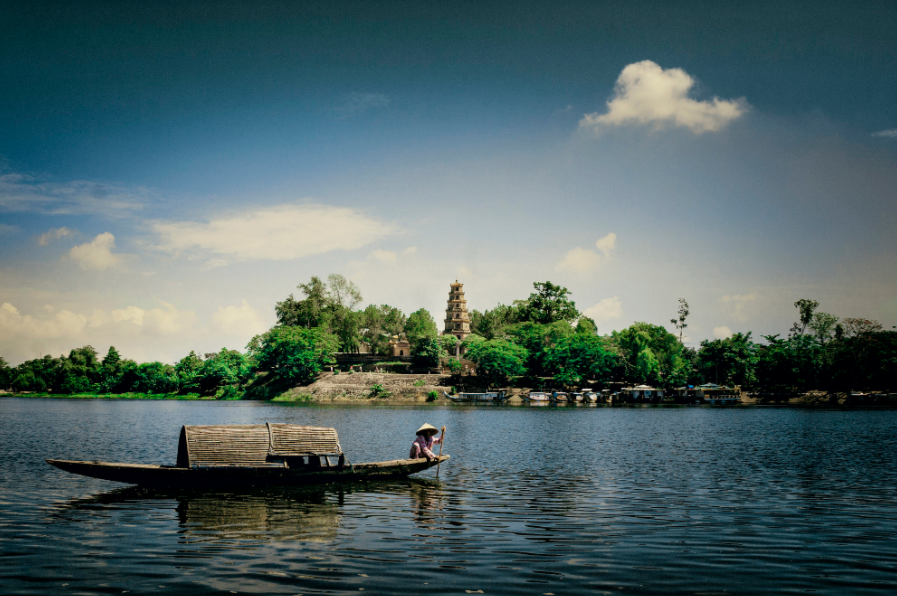 Photo Instagram @Bang Nguyen Manh
Photo Instagram @Bang Nguyen Manh
Thien Mu Pagoda, also known as Linh Mu Pagoda, is steeped in legend. Local residents believed that an old lady dressed in red appeared nightly on the hill, foretelling that a significant structure would be built in the area. This led to the hill being named Thien Mu Son (Mountain of Lady from Heaven). When Lord Nguyen Hoang passed by the hill, he decided to erect a pagoda, which he named Thien Mu. After enduring numerous events, damages, and renovations over the years, the pagoda has retained its status as an unofficial symbol of ancient Hue.
What To See
As visitors approach the pagoda, the first striking feature is the seven-storey octagonal tower known as Phuoc Duyen Tower (previously called Tu Nhan Tower). Constructed in the mid-19th century by King Thieu Tri, the tower commemorates the 80th birthday of his grandmother.
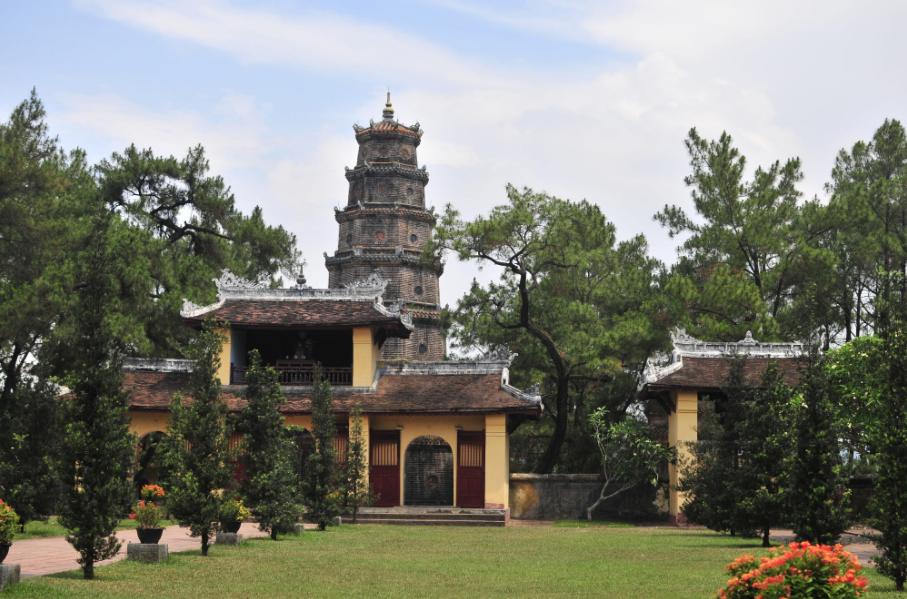 Photo Instagram @VanHai1215
Photo Instagram @VanHai1215
Through the three-door gate, visitors will find twelve imposing wooden sculptures of fierce temple guardians. At the center of the complex lies Dai Hung Palace, the main sanctuary of Thien Mu Pagoda. Here, devotees can admire intricate Buddha statues and a giant bell that measures 2.5 meters in height and weighs two tons, crafted in the early 18th century. The air is thick with fragrant incense, providing a calm atmosphere for prayers and reflections.
A structure located at the back of the site houses a national relic: the car that transported the monk Thich Quang Duc to the intersection of Phan Dinh Phung and Le Van Duyet streets in Saigon on June 11, 1963, where he self-immolated in protest against the anti-religious policies of the then-government.
 Photo: liberzy.comVisitors to this esteemed site can appreciate not only the beautiful landscape but also the traditional architecture characteristic of Hue pagodas. Perched on a hillside overlooking a scenic curve of the Perfume River, the pagoda presents a stunning view of the water and its surroundings. The area is adorned with pine trees, bonsai plants, and a tranquil manmade pond, imparting a serene atmosphere rarely found elsewhere.
Photo: liberzy.comVisitors to this esteemed site can appreciate not only the beautiful landscape but also the traditional architecture characteristic of Hue pagodas. Perched on a hillside overlooking a scenic curve of the Perfume River, the pagoda presents a stunning view of the water and its surroundings. The area is adorned with pine trees, bonsai plants, and a tranquil manmade pond, imparting a serene atmosphere rarely found elsewhere.
How To Get There
Thien Mu Pagoda is approximately 4 kilometers from the center of Hue City, accessible via motorbike, bicycle, or boat. A boat trip can also include visits to nearby Hon Chen Temple and Minh Mang Tomb. Biking is highly recommended due to the scenic route and relatively short distance. Travelers can combine their excursion to Thien Mu Pagoda with visits to the Hue Temple of Literature and Huyen Khong Pagoda, both located just a few kilometers away. For cyclists, early morning or late afternoon rides are ideal to avoid the heat of Hue.
When Best To Visit
The site is open daily from early morning until 5 PM. It's ideal for visitors to arrive early to witness the lively morning activities at the pagoda or during sunset, when the interplay of colors in the sky and river creates a breathtaking scene.
During special events, such as the 15th of April and July of the Lunar Calendar, as well as Tet Holiday, the pagoda attracts larger crowds and features unique ceremonies of interest to visitors. These occasions also provide an opportunity to sample traditional vegetarian cuisine, which is a highlight of the local culture. Guests are welcome to join in these communal meals.
Tips
When visiting the pagoda, it’s important to dress modestly. Avoid tight-fitting or short clothing, such as mini skirts, as access to the main hall, Dai Hung, is prohibited for individuals wearing such attire. Additionally, visitors should maintain a respectful silence during their exploration of the pagoda.
Useful Information
- Location: Thien Mu Pagoda, Hue
- Best for: Family, couple, solo
- Entrance: Free
- Hours: 8AM-5PM
- Distance to city center: 3.2km (2.0 mi)
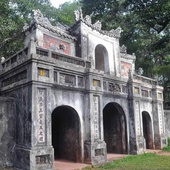
Tu Hieu Pagoda
In Hue - one of Vietnam's most sacred lands of Buddhism, Tu Hieu is regarded as the largest and oldest pagoda, and also a famous sightseeing spot with historical and cultural value.
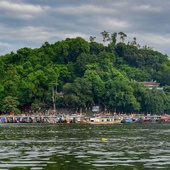
Hon Chen Temple
Hon Chen Temple is situated on a lovely slope of Ngoc Tran Mountain, 10km upstream from Hue Centre. The name “Ngoc Tran'' means Pearl Bowl, originating from the bowl-shape of the mountain. That also gives the temple its name: Hon Chen.
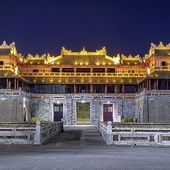
Hue Imperial Citadel
Famously being one of Vietnam’s seven UNESCO World Heritage Sites, the Imperial City of Hue has long been a must-see attraction for tourists visiting a hidden charm of Vietnam.








